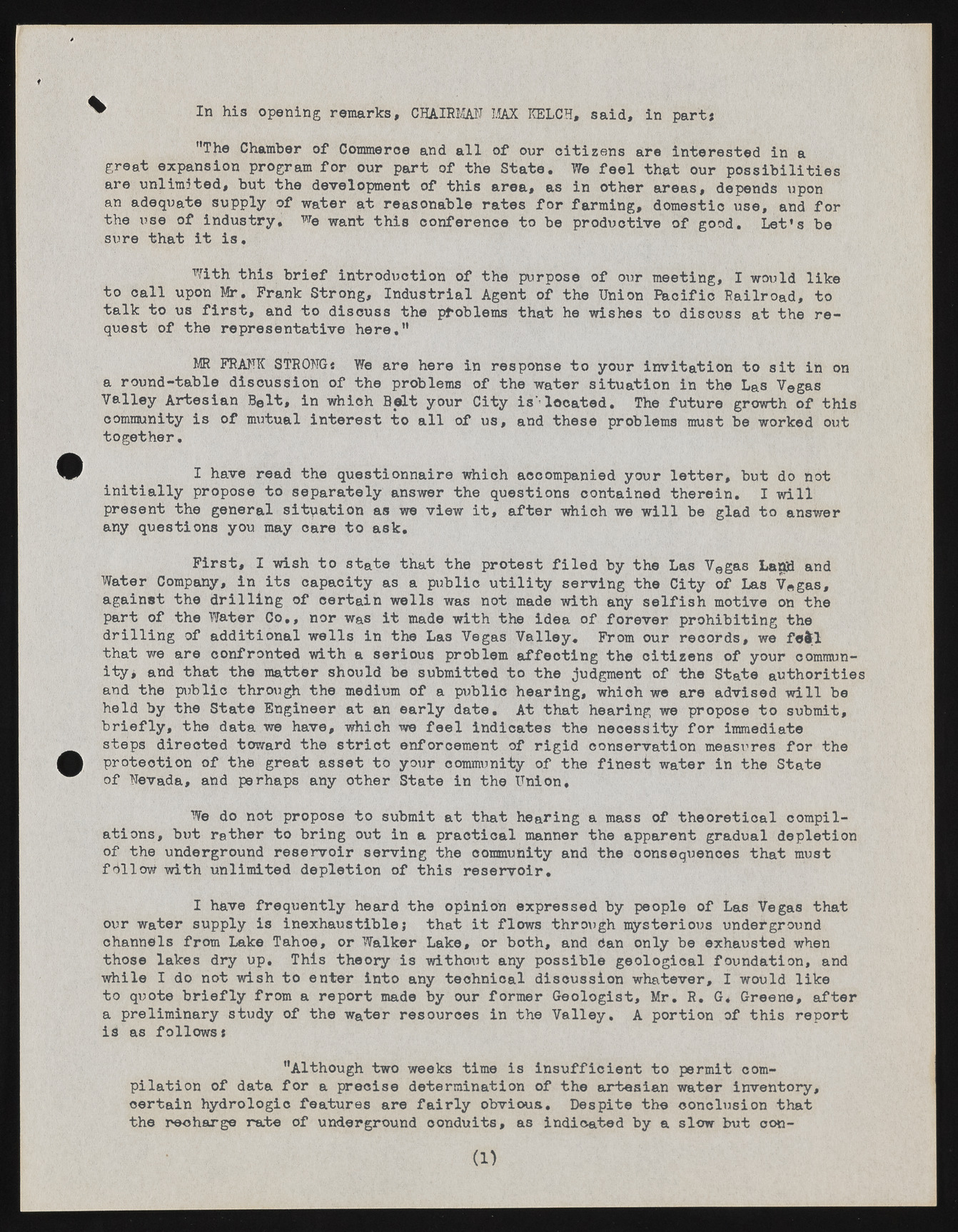Copyright & Fair-use Agreement
UNLV Special Collections provides copies of materials to facilitate private study, scholarship, or research. Material not in the public domain may be used according to fair use of copyrighted materials as defined by copyright law. Please cite us.
Please note that UNLV may not own the copyright to these materials and cannot provide permission to publish or distribute materials when UNLV is not the copyright holder. The user is solely responsible for determining the copyright status of materials and obtaining permission to use material from the copyright holder and for determining whether any permissions relating to any other rights are necessary for the intended use, and for obtaining all required permissions beyond that allowed by fair use.
Read more about our reproduction and use policy.
I agree.Information
Digital ID
Permalink
Details
More Info
Rights
Digital Provenance
Publisher
Transcription
^ In hi3 opening remarks, CHAIRMAN MAX KELCH, said, in parti "The Chamber of Commeroe and all of our citizens are interested in a great expansion program for our part of the State. We feel that our possibilities are unlimited, but the development of this area, as in other areas, depends upon an adequate supply of water at reasonable rates for farming, domestio use, and for the use of industry. We want this conference to be productive of good. Let's be sure that it is. With this brief introduction of the purpose of our meeting, I would like to call upon Mr. Frank Strong, Industrial Agent of the Union Pacific Railroad, to talk to us first, and to discuss the problems that he wishes to discuss at the request of the representative here." MR FRANK STRONG* We are here in response to your invitation to sit in on a round-table discussion of the problems of the water situation in the Las Vegas Valley Artesian Belt, in whioh Belt your City is-located. The future growth of this community is of mutual interest to all of us, and these problems must be worked out together. I have read the questionnaire which accompanied your letter, but do not initially propose to separately answer the questions contained therein. I will present the general situation as we view it, after which we will be glad to answer any questions you may care to ask. First, I wish to state that the protest filed by the Las V egas LaxBd and Water Company, in its capacity as a public utility serving the City of Las V agas, against the drilling of certain wells was not made with any selfish motive on the part of the Water Co., nor w as it made with the idea of forever prohibiting the drilling of additional wells in the Las Vegas Valley. From our records, we fe$l that we are confronted with a serious problem affeoting the oitizens of your oommun-ity^ and that the matter should be submitted to the judgment of the State authorities and the public through the medium of a public hearing, which we are advised will be held by the State Engineer at an early date. At that hearing we propose to submit, briefly, the data we have, which we feel indicates the necessity for immediate steps directed toward the strict enforcement of rigid conservation measures for the protection of the great asset to your community of the finest water in the State of Nevada, and perhaps any other State in the Union, We do not propose to submit at that hearing a mass of theoretical compilations, but rather to bring out in a practical manner the apparent gradual depletion of the underground reservoir serving the community and the consequences that must follow with unlimited depletion of this reservoir. I hfeve frequently heard the opinion expressed by people of Las Vegas that our water supply is inexhaustible; that it flows through mysterious underground channels from Lake Tahoe, or Walker Lake, or both, and dan only be exhausted when those lakes dry up. This theory is without any possible geologioal foundation, and while I do not wish to enter into any technical disoussion whatever, I would like to quote briefly from a report made by our former Geologist, Mr. R. G* Greene, after a preliminary study of the water resources in the Valley. A portion of this report is as follows* "Although two weeks time is insufficient to permit compilation of data for a precise determination of the artesian water inventory, oertain hydrologic features are fairly obvious. Despite the conclusion that the recharge rate of underground conduits, as indicated by a slow but oon- (1)

